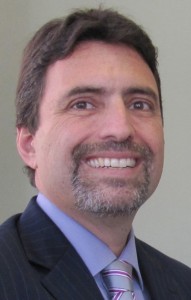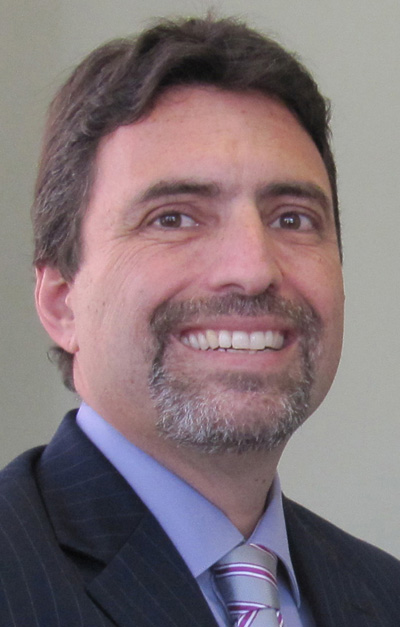By Joel Magalnick, Editor, JTNews
With seven months and two major events under his belt, Keith Dvorchik is beginning to feel like he’s getting his feet under him.
“You forget what the beginning is really like,” said the CEO and president of the Jewish Federation of Greater Seattle, who joined the organization last August. “It takes a long time to get things started, to get things moving.”
But after what he said have been hundreds of conversations with Federation stakeholders, community members, and agency and synagogue leaders, Dvorchik said he’s ready to start moving the Federation in a direction that makes it more relevant to Seattle’s diverse and changing community.
This is the direction he plans to move:
| To raise money in multiple venues to best take advantage of community-growth opportunities.
| Based upon available information, to understand the geography and demographics of the community as a whole and make funding decisions based upon its needs.
| To facilitate growth for all local Jewish organizations to help them better achieve their missions.
| To provide big-picture oversight of the community and assist in finding partnership opportunities for all local Jewish organizations.
| To be a resource for knowledge sharing, community outreach, and conflict resolution.
“The Federation always has to be value-add,” he said. “We need to always be focused on, “˜How does whatever it is what we’re going to be doing benefit the community?'”
 What that means, in essence, is to provide funding and services to help local organizations improve their existing services or create new programming. Until three years ago, the Federation allocated a set amount of money each year to an approved list of local agencies. It currently grants money to a wider range of organizations and synagogues based upon specific project requests, and Dvorchik sees his vision as an extension of this new model.
What that means, in essence, is to provide funding and services to help local organizations improve their existing services or create new programming. Until three years ago, the Federation allocated a set amount of money each year to an approved list of local agencies. It currently grants money to a wider range of organizations and synagogues based upon specific project requests, and Dvorchik sees his vision as an extension of this new model.
“We really need to be about enhancing Jewish life in Seattle in all areas,” Dvorchik said. “We need to find out what those needs are so we can make sure there are appropriate entry points, that there are appropriate leadership opportunities, that there are engagement opportunities, and that when there is a great opportunity, whatever agency comes with the idea that can fill it, has somebody to turn to and say… “˜We need you as our partner.'”
While partnerships may sound nice in theory, agencies require funding to pull their programs together.
“The dollars are still important, and I think that for me it’s the difference between being a fundraising organization and being an organization with a mission that raises funds to accomplish the mission,” he said. “I view us as the second.”
Dvorchik pointed to Livnot Chai, the community supplementary high school that launched in 2012, as an example.
“There was a need, there was an opportunity, we were able to step in with the funds and continue to provide the funds so that they can really grow and provide that service to the community,” he said.
The Federation’s annual community campaign has decreased or been largely stagnant since the 2008 fiscal year. Dvorchik believes the campaign has to mean more than the numbers, however.
“The more we fixate just on the campaign number we really provide ourselves a limited view of what’s possible,” he said.
Positioning the Federation as a center for supply purchases for multiple organizations as a way to help keep costs down is one option.
“We’re talking about hard dollars that never show up in the campaign,” he said.
The same could be done with professional services, he added.
The Washington State Holocaust Education Resource Center, which plans to move into a new space in the next year, “had some IT questions in their new facility, and so [Federation systems administrator Andrew Chadick] was able to provide some consulting to them,” he said. “They can move forward and have somebody who’s a real expert in this area help them and guide them. That’s a real value-add.”
But Dvorchik made clear he doesn’t believe the Federation should be dictating what local organizations should be doing.
“The key is finding out, “˜What are those opportunities for the community, what are those needs, where can we really provide the benefit?'” he said.
The real work of transforming the Federation will begin this summer, as organizations begin preparing for the fiscal year 2015 grant cycle. At that point, he will have a better idea of what types of funding agencies will seek and work with them to create the biggest bang for the buck. The results of a community demographic study just now getting underway and expected to be released late this year will provide the data necessary to understand the directions in which the community is moving.
Dvorchik noted how donations to the American Jewish Joint Distribution Committee and the Jewish Agency for Israel, much of which come from Federation campaigns around the country, leverage partnerships and efficiencies to stretch the value of each dollar. That, he said, needs to happen right here at home.
“Our obligation is, to treat every dollar as a sacred dollar, as a holy dollar, and to make sure that it’s being used to its highest capacity,” he said.
